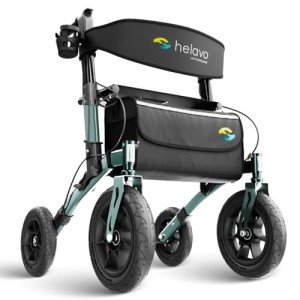The Comprehensive Guide to Adjustable Walkers: Enhance Mobility and Independence
Adjustable walkers have significantly become an integral part of mobility help, providing support and confidence to people facing obstacles in motion. They accommodate a large range of users, from seniors recovering from injury to individuals with mobility impairments. In this article, we will explore the features, benefits, considerations, and maintenance of adjustable walkers, improving understanding and facilitating notified choices.
What Is an Adjustable Walker?
An adjustable walker is a mobility aid developed to supply support and assistance to individuals who are recovering from surgical treatment, experiencing chronic conditions, or experiencing difficulties with balance and stability. Unlike basic walkers, adjustable walkers use personalized height settings, making sure a better fit for users of different heights and choices. This adaptability makes them perfect for a diverse series of people.
Table 1: Key Features of Adjustable Walkers
| Feature | Description |
|---|---|
| Height Adjustment | Walkers can be gotten used to various heights for optimal comfort and support. |
| Foldability | Lots of adjustable walkers can be easily folded for convenient storage and transport. |
| Lightweight Materials | Most designs are made from lightweight yet tough materials for convenience. |
| Ergonomically Designed Grips | Handles are contoured for a comfortable grip, lessening pressure on hands. |
| Durable Wheel Options | Some models use wheels for improved mobility over various surfaces. |
| Devices Availability | Optional accessories like baskets and trays that add functionality. |
Advantages of Using an Adjustable Walker
- Custom-made Fit: The main advantage of an adjustable walker is the capability to tailor it to the user's height, promoting better posture and lowering pressure on the back and joints.
- Improved Stability: They offer considerable support, permitting users to maintain balance while walking, hence decreasing the risk of falls.
- Mobility Independence: With adjustable walkers, individuals frequently feel a sense of liberty and confidence, empowering them to move around separately.
- Versatile Usage: These gadgets are developed for both indoor and outdoor use, permitting users to navigate various terrains safely.
- Increased Safety: Many adjustable walkers come geared up with features like brakes or non-slip grips, boosting general security during usage.
Selecting the Right Adjustable Walker
Selecting the best adjustable walker includes thinking about several elements, which can significantly affect the user's convenience and security. The following is a breakdown of considerations to bear in mind:
- Height Compatibility: Ensure that the walker can be gotten used to fit the user's height conveniently. A walker that is too low or expensive can create stress and reduce stability.
- Weight Capacity: Check the weight capacity of the walker to guarantee it can support the user securely.
- Wheel Options: Depending on the meant usage, consider whether a walker with wheels is required for ease of mobility. Wheeled walkers can often maneuver through tight areas with less effort.
- Material Quality: Opt for walkers made from high-quality materials to make sure resilience and toughness.
- Additional Features: Look for additional features such as a seat, storage baskets, or cup holders for included benefit.
- Convenience: Ensure that the grips and deals with are comfortable and reduce stress throughout use.
- Test Before Purchase: If possible, have the user try out various designs to find the one that feels most comfortable and secure.
Upkeep and Care
Correct maintenance and care of an adjustable walker can improve its lifespan and make sure safe usage. Here are some upkeep tips:
- Regular Inspection: Check the walker consistently for any signs of wear and tear, consisting of frayed straps, loose screws, or worn grips.
- Keep It Clean: Regularly clean down surface areas to avoid dirt buildup, especially if exposed to outdoor elements.
- Lube Moving Parts: If the walker has wheels or hinges, they ought to be regularly oiled to guarantee smooth operation.
- Height Adjustment Checks: Regularly confirm that height changes remain secure and undamaged to keep stability.
- Look For Repairs Promptly: If any parts end up being damaged, look for repair work right away to prevent compromising safety.
Frequently Asked Questions (FAQ)
1. How do I know if an adjustable walker is right for me?
Consulting with a health care professional or physiotherapist can help figure out whether an adjustable walker matches your specific needs.
2. Can a walker be changed for more than one person?
Yes, adjustable walkers can quickly be set to different heights for different users, making them suitable for home usage.
3. Are adjustable walkers safe for outdoor use?
Definitely! Lots of adjustable walkers are created with durable materials and particular features, offering stability on varied surface areas, consisting of lawn and gravel.
4. What is the difference between a walker and a rollator?
A walker is usually a stationary support device, while a rollator typically has wheels to help with motion and might likewise include a built-in seat.
5. How much does an adjustable walker expense?
Rates can range extensively based upon features and materials, typically from ₤ 50 to over ₤ 300. Walking Aid to shop around and examine choices.
Adjustable walkers provide a combination of security, benefit, and support for people requiring assistance with mobility. Understanding how to choose, maintain, and optimize the utility of an adjustable walker is vital for boosting lifestyle. As mobility aids continue to improve, adjustable walkers stay an important tool for fostering independence and confidence in people facing mobility challenges. With the right choice, users can experience increased flexibility, assurance, and convenience in their daily motions.

